Back in the old days, oil paint was considered to be the medium used for creating the most remarkable of paintings.

And they indeed were!
To this day, it hasn’t changed. Oil paintings have stood the test of time and can be used to create some of the most beautiful paintings known to man.
So, it is no surprise if an artist wants to create a masterpiece using oil, as well as beginners wanting to try it out, we can only imagine the kind of excitement one gets when they are just first starting out with oil painting.
But we also can imagine the frustration that comes when searching for the right tools they will need for oil painting.
That is why, today, we are going to help ease the search by bringing forth only the necessary tools you will require for the initial stage.
Without further ado, let’s begin right away!
Oil Painting Supplies For The Studio

Let’s start off this list with a good set of brushes.
If you are just starting out, you will only need to own a minimum amount of brushes. There’s really no need to get every size and shape all at once.
Save that hassle for the future. As you become better at painting, you will slowly and eventually learn all about using the right brushes for the right art.
Besides that, there is also no need to buy expensive ones immediately. Regular, affordable brushes will do for now.
And if you’re still wondering what kinds of brushes you should get, we recommend buying a few brushes of different sizes for the time being.
However, if you are already familiar with oil painting, you will know that brushes used for oil paints don’t usually last that long, especially when the brushes are of low quality and cheap.
Still, high-functioning brushes cost a lot too.
If you are caught in between and unable to make a decision, we recommend using fiber brushes.
These are not as expensive as high-end brushes, yet offer the same service as them. We also think that they are worth investing in because the quality is excellent and they last for a long time.
-
Solvents and spirits
When working with oil paints, cleaning brushes don’t come easy.
Unlike other paints that can be cleaned up pretty easily under running water, oil paints need solutions.
We recommend getting odorless mineral spirits that are of ‘artist’ quality and not just any type of spirit.
The reason is that the latter contains chemicals that can be harmful to your health, especially when you are exposed to the paints for long hours. Headaches and dizziness are prone to happen with such spirits.
Besides cleaning brushes pretty well, these artist-grade solvents also dilute thicker paints. Odorless mineral spirits allow you to manipulate the thickness of oil paints as you like.
But before you decide to get a bottle, make sure the solvent you’ll be using is right/compatible with the oil paint (this will likely be mentioned on the paint label).
Linseed Oil. You will hear this name very often. Linseed oil is similar to odorless mineral spirits and it also does the same work. It also extends the shelf-life of oil paints, and this helps save you some money from buying new oil paints every now and then.
However, the only difference is that linseed oil (or oil medium) is a much more gentle solvent to dilute oil paints without compromising their texture.
And since this is also an oil-based solvent, it will prolong the drying time of the paints. In this case, you have to get quick-drying mediums which we will talk about in a minute.
-
-
Pencils
-
When talking about oil painting, pencils seem unnecessary.
But at times, they are required for outlining guides and help out with minor details; especially when you’re a beginner, you will require to use a pencil.
They can be handy in other things too so it’s safe grabbing a couple of them to ease your way through.
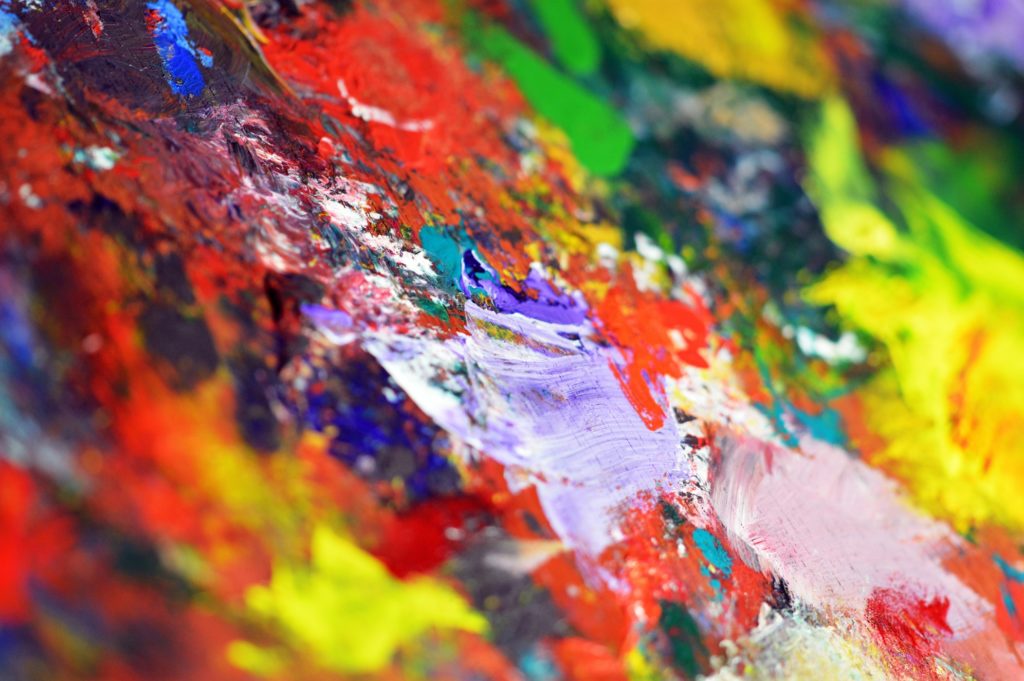
-
Old Newspapers or Rags
Now, you may be wondering why we’re including newspaper as a tool for oil painting among other essential supplies.
The thing is, newspapers are a great medium for absorbing paint. You will need to clean your paint brushes more frequently if you have to change colors - and newspapers help.
A cloth works pretty well too, although you have to wash it when you’re done with painting.
But most of the time you will need to constantly change colors. So, we would recommend using old newspapers and rags. So when you’re done, you can just throw them away.
That’s not all, though. Newspapers are also handy when you have to protect the floor from paint spills and splashes.
Rather than spending money to buy a mat or taking the time out to clean the floor after each project, using newspapers is much more convenient and easy.
So grab a bundle of those old newspapers lying around the house and put them to good use!
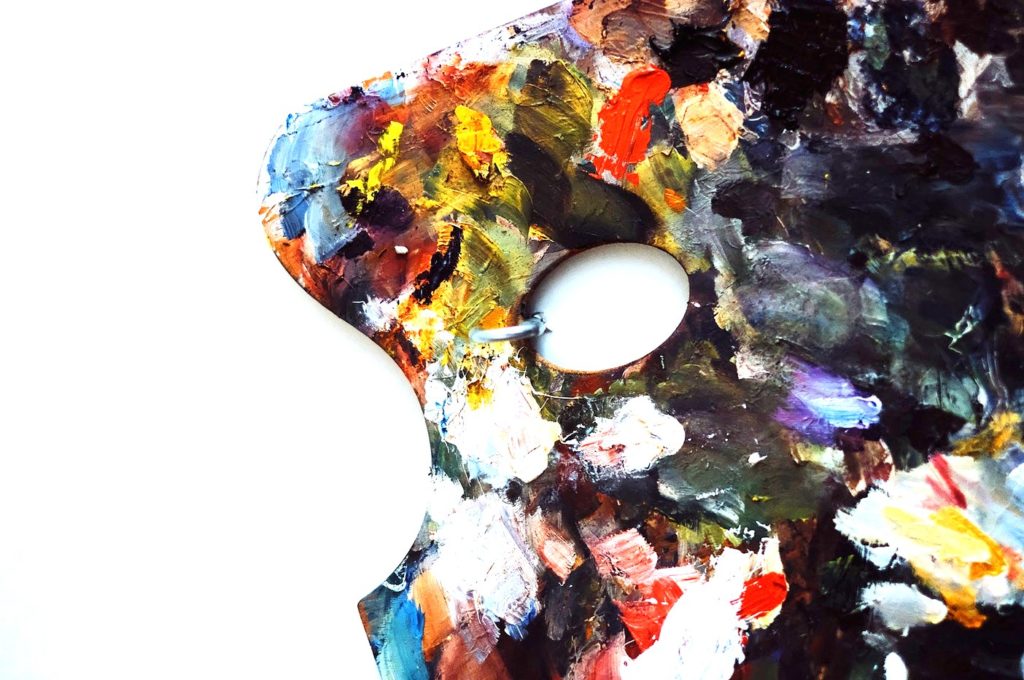
Next, we have the palette. This one is a valuable tool to have in your studio because it prevents you from creating a mess.
We firmly believe that it is one of the most critical tools for a painter to own because it is:
- Specifically made for artists to mix paints
- Compliments and completes the artist
- Organizes and prevents potential messes
Palettes come in different sizes and shapes. When choosing the right palette, you have to know how much paint you’ll be using most of the time so that this will give you an idea of the size you’ll require.
Although, we will suggest that you get a medium-sized palette if you’re starting out. You will have more than enough space to practice mixing your paints.
Also, look for one with a holder or a thumb hole. It will allow you to handle the palette comfortably without straining your hand during extended use.
If you’re still wondering what kind of palette will suit you best, you can try out one of our suggestions:
- Ceramic palettes
- Glass palettes
- Wooden palettes
- Plastic palettes
- Palette pads
Canvas is undeniably the best painting surface for oil painting. It was preferred by the greats back in the old days, and it’s still preferred by artists now.
The reason? Canvas compliments oil paints in a different manner than no other painting surface can.
The most preferred canvases for oil painting are either linen or cotton.
Both deliver great results for oil painting. The only difference is that cotton canvas is easier to set up and cheaper too, while linen canvas is expensive and hard to set up but it provides better results.

Canvases come in different varieties and shapes. Take a look at the common ones below and see which one will go best with your needs:
- Stretched canvas. This type of canvas is mostly used for paintings to be displayed. It got its name from its attribute. It has a certain extent of elasticity to make the fabric flexible for painting.
- Canvas panel. This is a cheaper form of canvas and it is preferred by most artists who are practicing the art of oil painting.
However, the surface is not stretched but pasted on a straight board and this offers hard support while working. It works best for light-handed artists.
- Canvas pads. A canvas pad contains multiple sheets of tearable canvases inside.
Of course, canvas sheets won’t last for long. But these are the best options for amateurs because they’re tearable and highly affordable, which makes them perfect for learning and making mistakes.
If you want to, you can get them in different sizes.
- Canvas rolls. Just as the name suggests, this next canvas comes in long rolls.
Canvas rolls provide the artist the liberty to choose a preferred size for their painting.
Besides canvas, there are other oil paint surfaces you might like to keep in the studio. These also are good for oil painting:
- Cartridge Paper/Watercolor Paper. Cartridge papers which are also known as drawing papers are more or less the same as regular papers, except for the thickness difference. These come at thicker sizes.
Watercolor papers, on the other hand, are thick but with more tooth and texture. And that allows the paper to hold the oil paints better in place.
Both of these papers have enough density which makes them convenient for oil painting.
- Wood. Wood surface provides strong and sturdy support. And when it’s well prepped, it is set for portraying amazing paintings.
Since wood is highly durable and heavy, it’s perfect for permanent display at home.
- MDF. Medium Density Fiberboards are made of crushed wood that’s mixed with other substances.
Simply put, an MDF is a condensed board that is very strong; almost unbreakable.
What makes this surface a good option for artists is that it is very cheap and extremely durable. Like regular wood, it only needs enough preparation beforehand to paint on it.
- Glass. Glass is much more fragile than any other surface out there. But with glass, you get extraordinary results.
It truly depends on what you prime the glass with, how much paint you use, and your style of painting.
We recommend you give this option a try because you never know what surprises you might get out of it. Moreover, you can always clean up mistakes made on this surface.
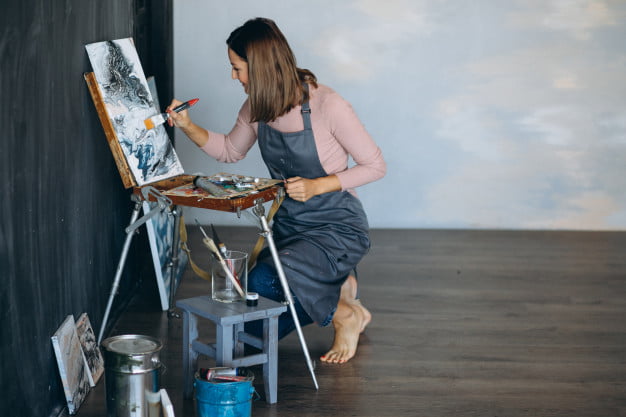
-
Easel
Although they are not compulsory, easels are preferred by artists worldwide because of the benefits they receive from these tools. Such benefits are:
- Accurate perspective
Unlike using a table, an easel holds up the painting so you can see it from all angles, hence, it enhances the perspective.
This helps the artist to create accurate paintings as originally desired.
- Does not affect your posture
Most artists work on a piece for an extended period of time. This can really affect the spine if they paint on a table in which they have to bend for long hours.
With an easel, the painting is fixed up high and therefore, it improves the posture.
- Speed things up
Because the posture is right and the perspective is on point, there will be no unnecessary delays on the work if you use an easel.
- Prevents unwanted minor accidents/protects your painting
When using a table where you probably keep other things as well, there is a high chance that you might accidentally knock something over and that will ruin the whole painting.
But an easel is specifically made to hold only the painting, and nothing else. That is why there’s very little chance that the piece will get damaged on an easel.
An easel is also not an expensive tool. So investing in one can really help you in a lot of ways. Plus, they complete your professional studio!
-
Painting Apron
There is always a tendency that you’ll spill or splash some paint on your clothes while painting. And unlike acrylics or watercolors, oil paints are harder to get rid of.
So, what we would recommend is setting aside an apron to wear only for painting.
Another obvious thing to say is that aprons are handy if you have to dry your hands immediately for receiving a phone call, taking a sip of coffee or any minor thing of that sort.
It does not necessarily have to be expensive. A simple apron would do.
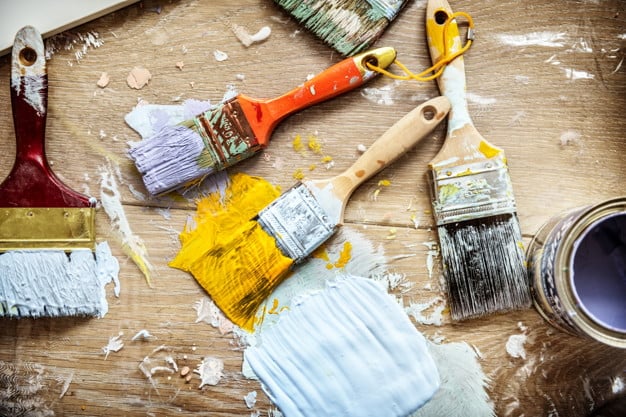
-
Gesso
Gesso is a liquid primer used for priming the surfaces you will be painting on.
If you had gone through the list of surfaces we’ve listed down, then it’s important to know that almost every one of them requires a primer.
What gesso does is make the surface firm to hold paints better. It adds enough tooth and texture on the surface to ensure great results. Without a primer, paints will appear to be patchy and uneven.
Gesso comes in different types: clear gesso, colored gesso, traditional white gesso, and black gesso. Choose the one that best suits your painting.
-
Quick-Drying Medium
When the paint is too runny, artists turn to mediums to thicken it. And that works wonders indeed! It causes the paint to dry out slowly and allows the artist to blend and mix colors pretty easily as well.
While oil paints that dry off slowly are more comfortable to mix, the disadvantage side of it is that you have to wait a long time for it to completely dry off before you can touch or do anything with it.
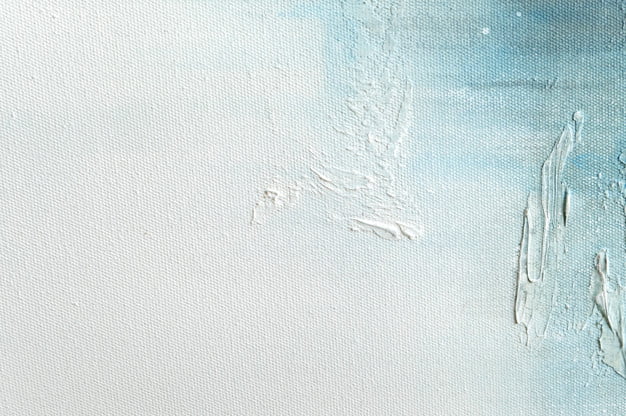
Here’s the reason behind it:
What causes oil paints to dry out is oxidation. Basically, what happens with oil paints is that when it gets in contact with air, a chemical reaction occurs and causes a decrease in electrons, hence, oil paints don’t evaporate like watercolors/acrylics; they harden and dry out slowly.
This is the reason why you’ll notice that blowing it dry takes a longer time than it does with water-based paints.
Note that it also depends on the environment’s temperature around you. Based on this, you’ll see that oil paints normally take from 1-2 or 4-5 days to dry out completely.
This can get really frustrating, especially when you need the painting to be ready immediately.
That is why there are quick-drying mediums out there.
While spirits also help in this process, however, they are not eco-friendly. But there are certain quick-drying mediums that are safe for the environment.
If you get one quick-drying medium and use it for oil paintings, you will see an immense difference in the drying time. Rather than taking days to dry, quick-drying mediums allow the piece to dry in a matter of hours.
-
Container or a jar to clean brushes
To be more organized and reduce mess, getting a medium-sized jar to clean your brushes will really help.
Keeping a jar beside you goes way beyond just staying organized. The solvents needed to thin and clean brushes will also be stored in it. Therefore, there is no need to change the liquid so frequently.
As time goes by, you will realize that even a small thing such as a jar can really help economize money and usage.
And finally, a great set of oil paints!
Choosing oil paints can get you stuck when it comes to the price.
We highly recommend that if you’re a beginner, you should start off with a set of oil paints that contains a range of different colors. It does not have to be overly expensive. Just good quality, affordable paints would do.
There is no harm in trying out different oil paints at different prices as well because from there, you will slowly learn which ones are the most satisfying to you and your style.
However, keep in mind that buying a set of really expensive paints while you’re practicing is not a very bright idea. Mistakes are still bound to happen, and using costly paints will just lead to disappointments later.
It is not hard to find good quality and affordable oil paints. Look for a set of ‘artist’ or ‘student’ grade oil paints if you are still mastering the art of oil painting. When you feel you are improving, that’s when you give ‘professional’ grade paints a try.
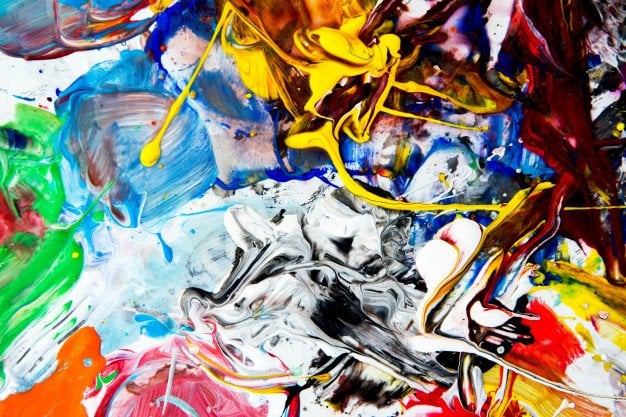
Conclusion On Oil Painting Supplies
Now, there are a lot of other materials you will require for setting up your very own oil painting studio. But if you are just beginning with the journey, these are mainly all the basic tools/supplies you will need, and you’ll be on your way.
As you progress, it will naturally come to you to figure out what other things you’ll be needing.
So we will leave you with that for now, and we hope to see you again sometime soon.
Hope you enjoyed this article. Good luck!
Related Articles
10 Best Canvases for Oil Painting | Beginner & Artist Grades
8 Best Oil Paint Brushes of 2023
11 Best Oil Paints for Beginners & Professionals Artists Alike
Learn What is the Best Surface for Oil Painting
How Long It Will Take Oil Paint To Dry & How to Speed It Up
Oil Painting for Beginners Basics & How to Use Oil Paints
Learn How To Dry Oil Paint Faster Overnight
11 Best Palettes for Oil Painting
5 Things You Should Know Before Painting Oil Paint on Glass
